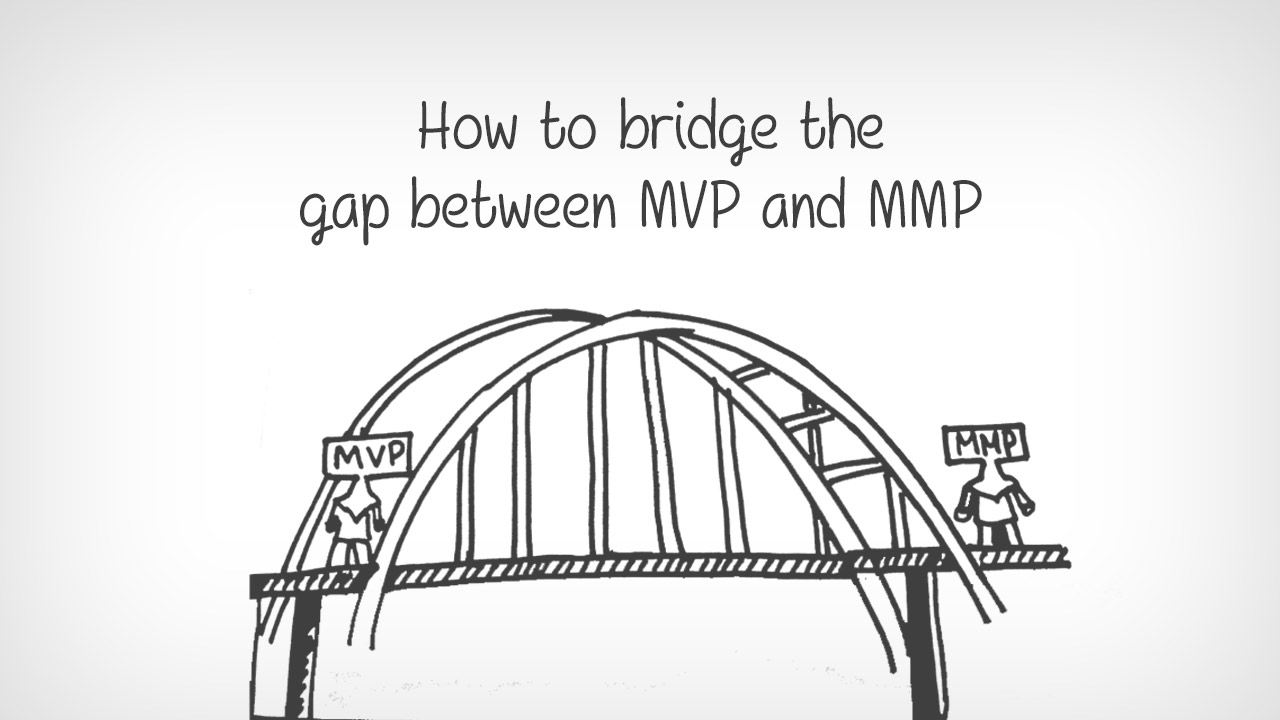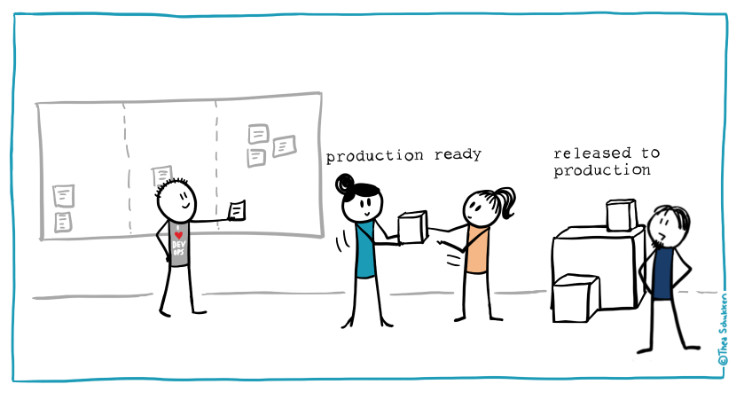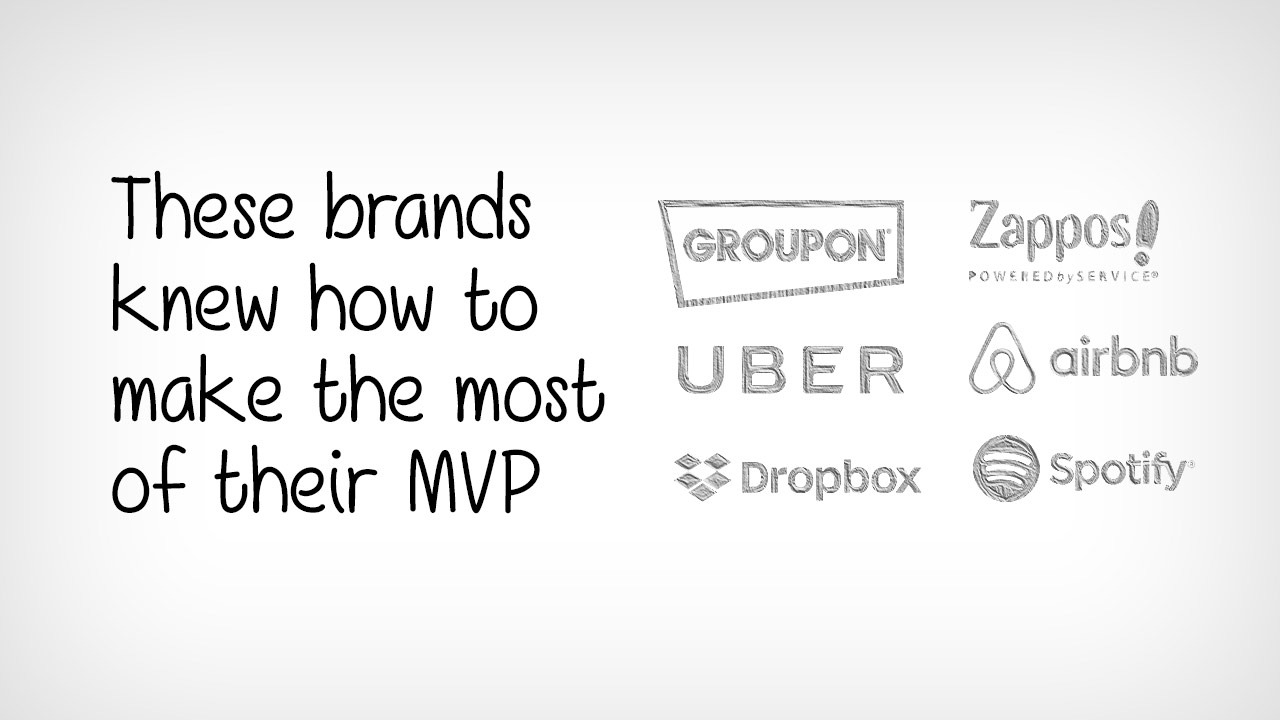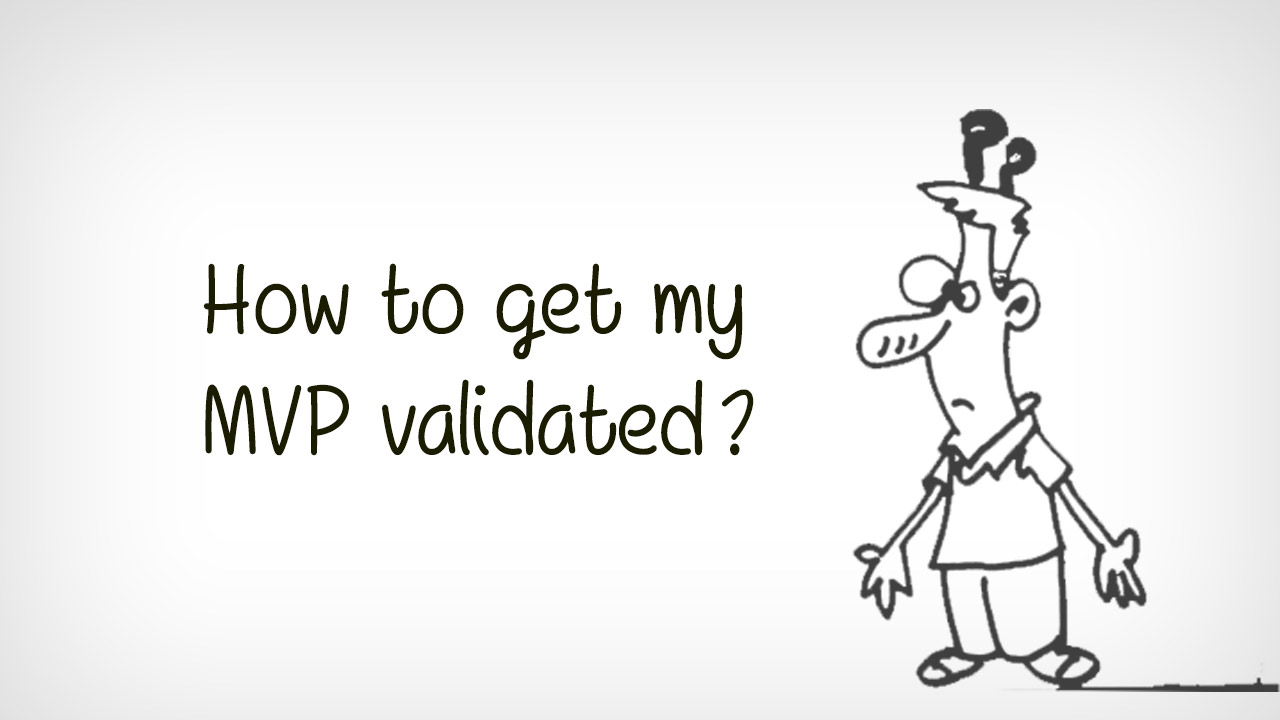What Happens Next After the MVP Gets Ready?
Updated on Aug 23, 2018
**Spoiler Alert: [This is a long post, you might want to get yourself a cup of hot coffee! It walks you through the idea of what happens next after MVP development, what is MMP and why it comes after agile minimum viable product development and how to bridge the gap between MMP & MVP with links to resources. Now, you see why you will need that hot drink. ;)]
As I was saying in the last write up, the idea of building an MVP is tricky. All you need is a user-centric approach and create an MVP that stands out. It should be desirable and accepted by the mass. After you have the agile minimum viable product developed and validated, you just need to iterate on the feedback and develop rapidly.
Yet, I meet a number of people frequently, who feel lost after the MVP is built. They don’t know what is next after MVP!
Why so? What makes them confused?
[bctt tweet=”MVP is a process and not a product – Eric Ries” username=””]
Yevgeniy (Jim) Brikman was right in explaining this hullabaloo. He spotted the wrong in the whole picture and explains why Eric Ries calls “MVP is a process and not a product.” Rather it is just a proof of concept. If the MVP works well, the startup works on the process to mature a project.
That all looks very perfect.
But why does it go all wrong for startups? Why they get stuck with the MVP? Why are they not so sure about the next step after MVP?
The problem is that the startups do not understand the goal of an MVP. It is not a product with half features or a way to get the product out of the house. It is not something that you build once, and the job is done. Rather,
MVP is the first target version of your dream product. They consume less time and less cost. But what comes next after MVP?
As you agreed that you’re building an MVP, this means you should not prolong the development stage. At first, you need to make sure what your target customer is exactly looking for. Since you cannot lose the idea-gems just because it is not the perfect time.
It is better to postpone the extra features and add it after the MVP becomes a success. You can prioritize and put them in an order you want to build them. Since, most startups feel that after the MVP is ready and validated, they will start working on the final product and everything will settle in their favor.
But that is not the story.
Stories of Brands Who Never Built the Entire Product But Became Famous
Let me narrate you some story of those who knew what to do after agile minimum viable product development.
Dropbox
Drew Houston from Dropbox never released the entire product when he came up with the idea in 2007. He released a simple video explaining what the product does. He published the video through Digg and the target was just the early adopters of technology.
This video actually helped them to increase beta sign-up from 5000 to 75000 in an overnight. The interest further validated some assumptions developers already made. Since file organization was a tough task for most people and Dropbox was actually trying to address this.
Once their assumption proved right, they launched Dropbox, catering services to 1 million users in less than 10 months.
[bctt tweet=”Dropbox catered 1 million users in less than 10 months, with an MMP” username=””]
Groupon
They started as a simple WordPress Blog wherein the team regularly offered some daily discounts, gift certificates, concert vouchers, movie tickets, and other details in the Chicago area. People who signed up received PDFs with coupons. You now know what Groupon has achieved.
Both of them did the correct thing after their MVP was ready. What are the steps these brands like Groupon, Dropbox, Uber, Zappos or AirBNB took?
What all they moved into was preparing – a Minimum Marketable Product. This is what brought them success. They used this MMP to sell, look for the target market, gather business intelligence, and prioritize their product.
What’s MMP?
A minimum marketable product is that which addresses the needs of the customers and you are ready to sell. MMP comes to the big picture when you have tested your product. It is high time to roll the product with minimum features rather putting the product on the shelves.
A Guide for those who feel their App Validation went all Wrong!
Since too much feature can clutter your product and increase the cost. Creating an MMP simply means focusing on a core problem which you aim to solve and deliver a concise solution. When you build your MMP it is important to constantly ask yourself – “What is the smallest or least complicated problem for which a customer will like to pay you to solve?”
MMP Follows Just After Agile Minimum Viable Product Development
Pretend that you have got the MVP validated and you just started to work on the full product. Finally, you launched it. But none is using it. You should start questioning yourself – “if I validated my agile minimum viable product, what made things go wrong?”
What’s the point of developing something so good if no one uses it?
If none is using your app, you belong to the two popular camps –
- You have built a great agile minimum viable product, but you had issues with your distribution.
- Your product is not at all great, and you found that for the first time.
What Influences the Shift of MMP from Agile Minimum Viable Product?
Whether you are building an MVP or ready with your MMP to release in the target market, the key point lies in the fact that you need to build a product that will solve a problem. If it does not address the pain points of the customer, people or business would dump it.
Here are the factors that influence the shift from MMP to MVP.
- How reliable is the MVP?
MVP helps the beta testers to recognize the major bugs in the product. So that you release a 100% bug-free product. When you release an MMP make sure it does not displease your user.
- Scalability is something that should work out
Scalability is something that you need to work during MVP. As most startups get overwhelmed with the user acquisition when the MMP product cycle is released. There is a chance that the agile minimum viable product can catch quickly on the signups or start rolling in.
How can startup scale up and when is the right time? Explore this article to know more or visualize through this –

Source: Medium
So it is important to keep in mind that whatever problem you have chosen to host your product is scalable for new users. But make sure that you are ready to handle the full-fledged traffic after the release of the MMP.
- Performance of your product is a great determinant
It just 250 milliseconds to shift your users from your product to a competitor’s. It’s not me but this NY Times article is saying. No one likes to have a slow product and wont even pay for it. So delay in response can lead to potential customer loss. Test the performance before you release the MMP.
How to Bridge the Gap Between MVP and MMP?
This is where the real fun begins.
As you have the MVP is your hand which is validated and ready to sell. It is an idea produced by a watered down or flawed version of a final product. If it succeeds it validates the idea. But if it fails you do not know whether it was the idea which had flaws or the product was simply not good.
But for an invalidated MVP, which takes a small bit of the functionality and produces a better product. If it is successful it wins, but it does not provide the full-feature list to be hit. But if it fails, it means you invalidated the idea.
Read: How we help startups in their journey from MVP to MMP?
However, I will suggest that whether you have a validated or an invalidated MVP – shift to an MMP, since in both the stance you are providing the least to know the user preferences.

To bridge the gap between MVP and MMP –
- Find the market for your agile minimum viable product
You are not looking for the global audience at this point, do you? In fact, the target audience might be very small, only a handful of potential customers might be there on the list. In case you are already in that industry, you can further cherry-pick a few trusted partners and gather some constructive feedback. If you reach out to a new market, it is best to look for influencers who could benefit the most from your solution.
The key fact to remember while you sell your agile minimum viable product is to present it as a viable, useful and worthy product. The vision of the future product might be intriguing to the prospects of today. But they must feel satisfied with the product that you sell today.
A guide for those who feel their App Validation went all wrong
If planned correctly, MVP of yours will solve the customer’s problems. But the mistakes startupreneurs make after developing the agile minimum viable product – they keep it on the shelf and does not market at this stage. Until you put it into the customer’s hand, how will you get the true feedback?
- Gather feedback and data
What is the next step after MVP is released in the target market? It is important to collect data. This is important because the decisions of the customers will help you to break or make the future of the product. When you sell the MVP you exactly come to know, how the features you considered important is going to perform. You learn why a customer purchases the MVP or ditched it.
The experience of the customer with your product is one of the best indicators of what features might form the next step after MVP.
So, how to launch the MMP?
Now as you have collected all the feedback on the MVP it is your turn to launch the MMP. And these steps will clearly direct you to the stage of MMP development.
- You need to prioritize your backlogs
After your agile minimum viable product gathers data, you come to know some of the true facts that what you thought have worked well or failed. The MVP you built was upon your thoughts, but for the MMP you have to take this real advice of the customer into account and let it perform as your customers want.
If you walk on that path, you could find your product veering along unexpected paths. Some companies will resist that clinging to their own thought was good. But if you do so, you will lose the sight of creating an MVP.
It is time to prioritize your backlogs and need to respond in a way that you can gather data proactively. The backlog should enlist all features, planned and broken down into chunks called user stories. In a Scrum, you will find the user stories re-prioritized before the launch of every production sprint. Adjust your efforts to better accommodate the business intelligence.
This way you can develop the most important features in every sprint. No matter how many times you have changed it since you developed the agile minimum viable product.
- You need to stick with the scrum’s production sprint
If you want to launch an MMP in the market, you have to stick to the scrum’s production sprint. As soon as you accumulate the data, next after MVP promotion you need to assess on the feedback and prioritize the features. You can address the wants of your existing customers and develop new functional features to reach a new audience. Just as Dropbox did.

Source: LinkedIn
As long as you stick to this process, you will be able to improve the software products in ways that provide the most value. The huge priority shifts occur if dictated by the market or from your own management end. This production sprint helps to take you all the way to final MMP.
To Cut it Short
Phew! I have finished almost. Now you know why I asked for a cup of coffee.
Well, if you have developed your MVP, validated or not validated it, you must have a question – “what to do next after MVP development?”
It’s simple. Walk towards the development of an MMP – minimum marketable product.
Steps you need to take after agile minimum viable product development is –
- Create an MVP
- Validate your MVP
- Gather feedback and data.
- Prioritize your features
- Developing minimum features through product sprints
- Launching the MMP
Hope you enjoyed! If you need help developing an agile minimum viable product, selling it and growing it through product sprints, we can help!
Editor’s Note: This post was originally published on Dec 8, 2017, and has been updated for accuracy and comprehensiveness.

